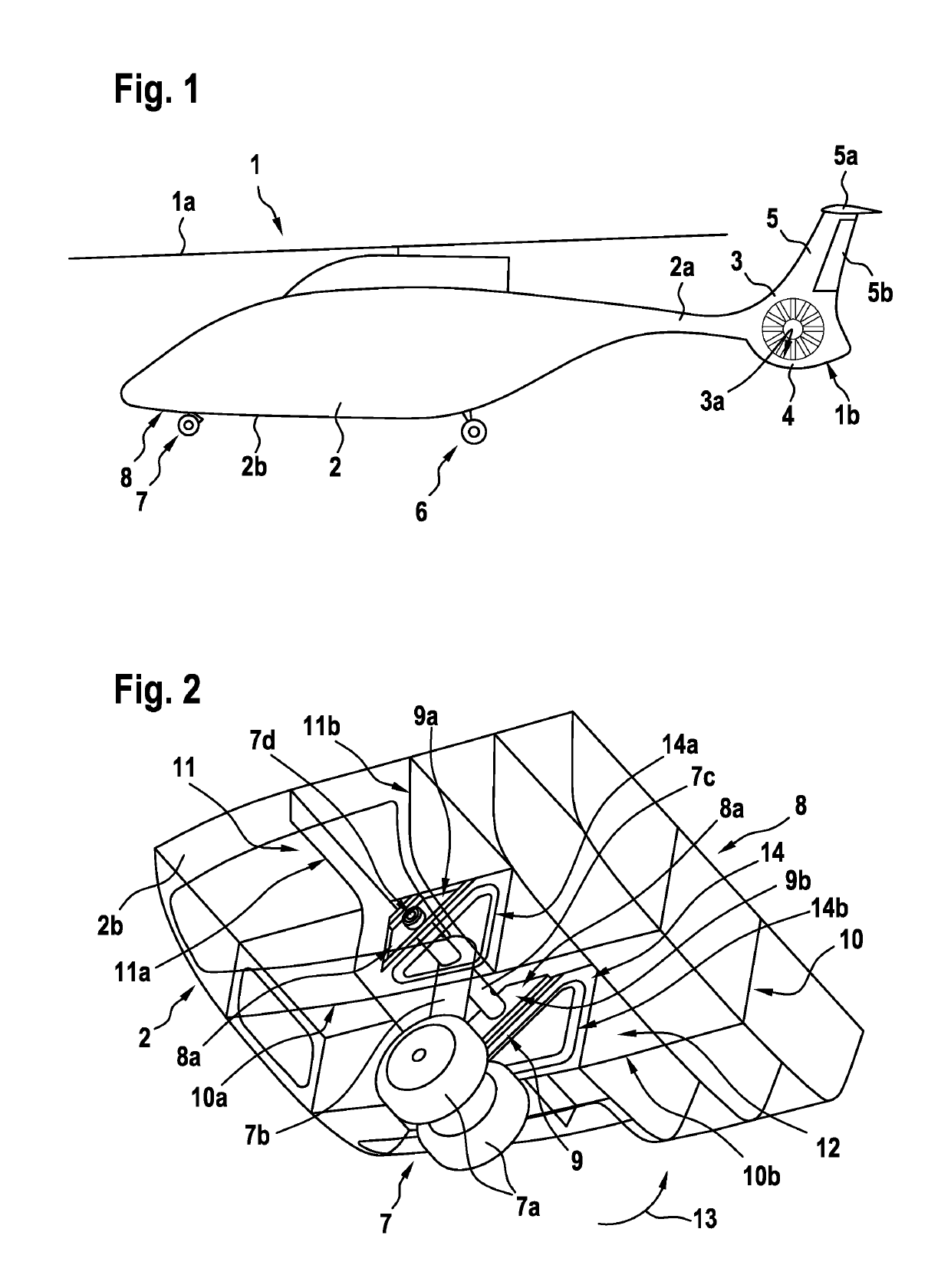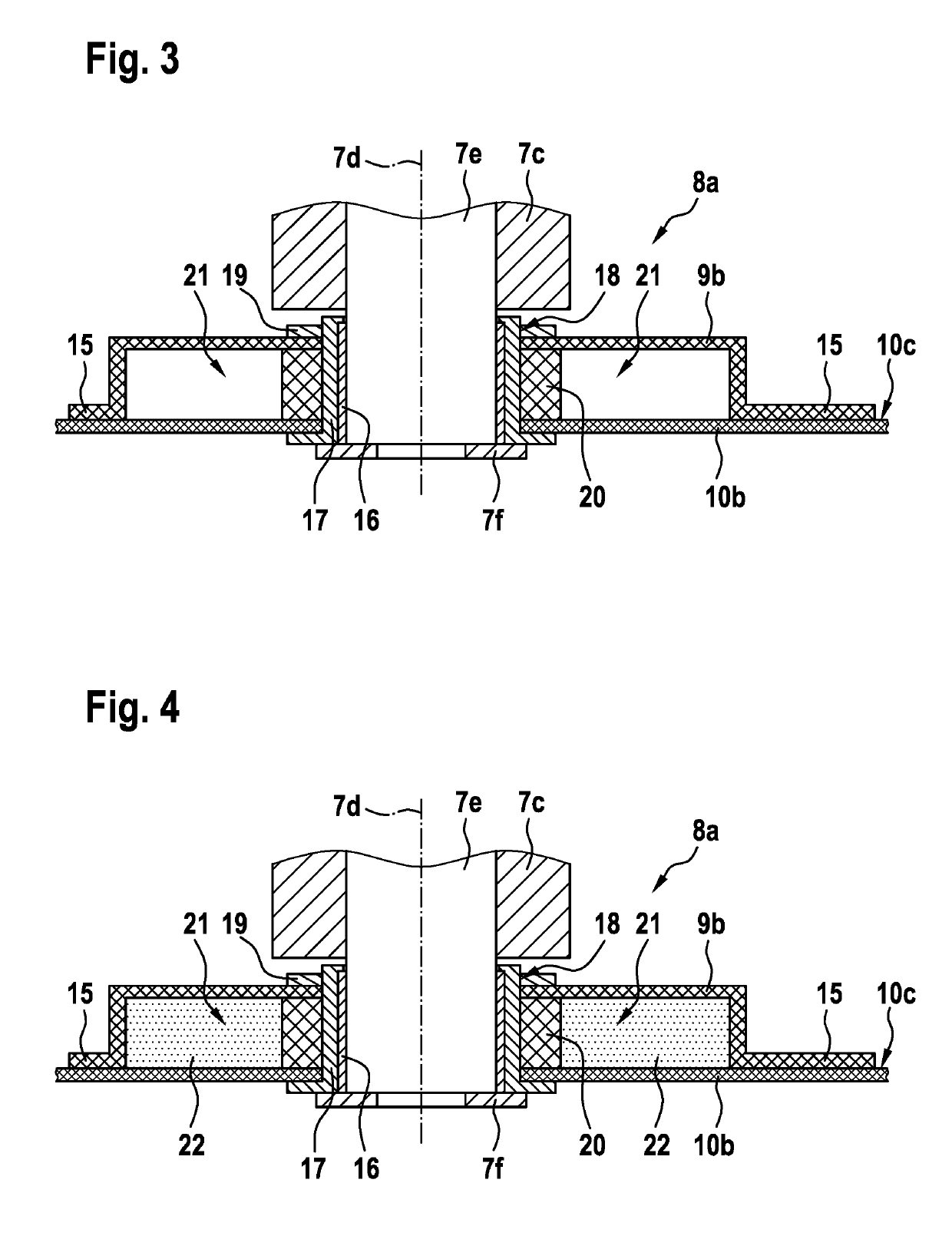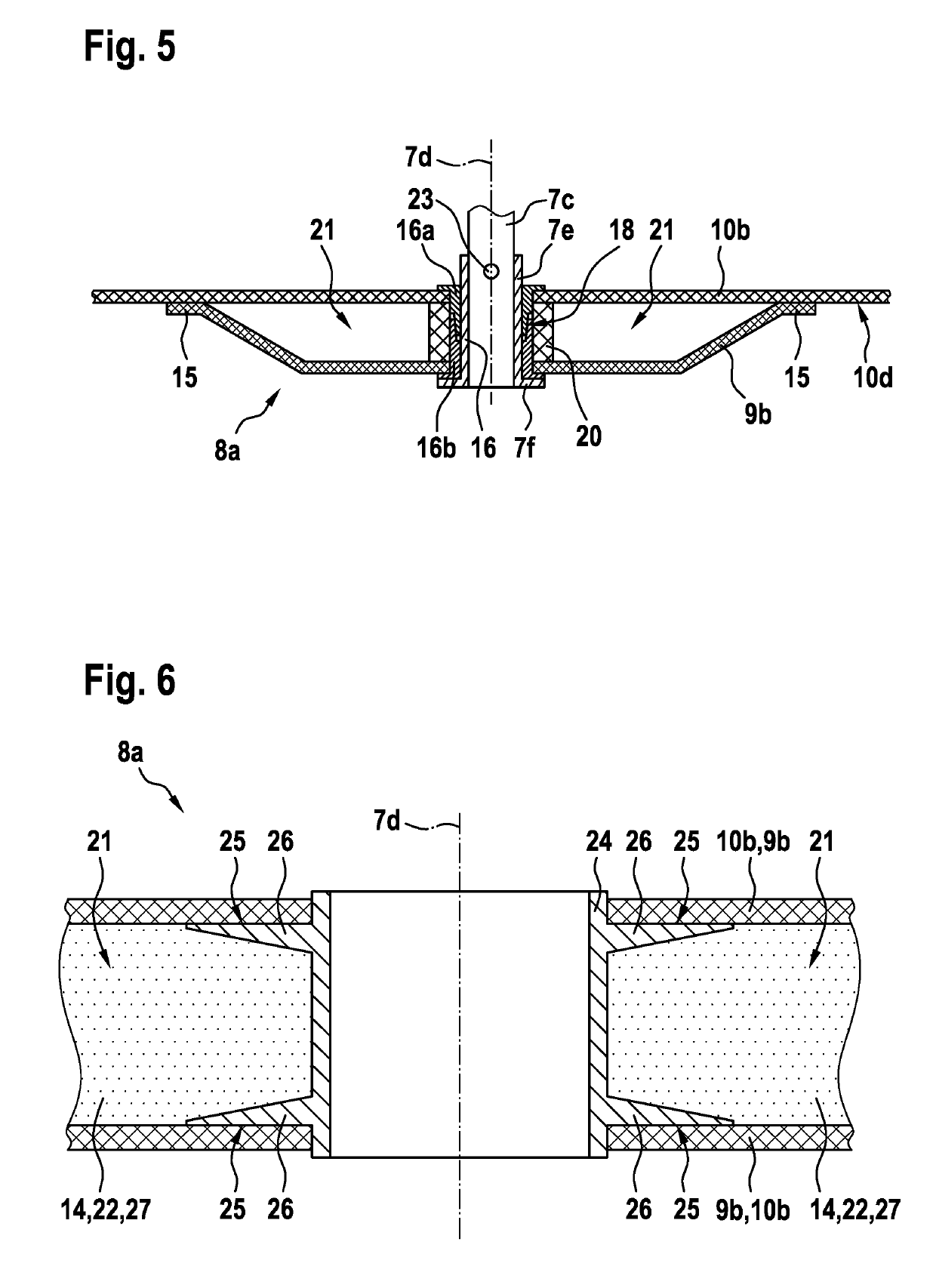Aircraft structural component that is adapted for absorbing and transmitting forces in an aircraft
a technology for aircraft and structural components, applied in the direction of sheet joining, material gluing, undercarriage, etc., can solve the problems of reducing the service life of the aircraft, so as to improve the distribution of absorbed forces and reduce the weight. , the effect of high resistan
- Summary
- Abstract
- Description
- Claims
- Application Information
AI Technical Summary
Benefits of technology
Problems solved by technology
Method used
Image
Examples
Embodiment Construction
[0058]FIG. 1 shows a vehicle 1 that is exemplarily illustrated as an aircraft, in particular as a rotary wing aircraft and, more particularly, as a helicopter. Thus, for purposes of simplicity and clarity, the vehicle 1 is hereinafter referred to as the “helicopter 1”. The present invention is, however, not limited to helicopters and can likewise be applied to any other vehicle, for instance a vehicle that is controllable in a flowing medium, such as air or water, independent of a particular configuration thereof. Therefore, the helicopter 1 is only briefly described by way of example for illustrating a possible field of application of the present invention, but not for restricting the present invention thereto.
[0059]The helicopter 1 illustratively comprises a fuselage 2 that defines a tail boom 2a. According to one aspect of the present invention, the fuselage 2 comprises a bottom shell 2b that is equipped with a force-absorbing structure 8. Preferably, the force-absorbing structur...
PUM
 Login to View More
Login to View More Abstract
Description
Claims
Application Information
 Login to View More
Login to View More - R&D
- Intellectual Property
- Life Sciences
- Materials
- Tech Scout
- Unparalleled Data Quality
- Higher Quality Content
- 60% Fewer Hallucinations
Browse by: Latest US Patents, China's latest patents, Technical Efficacy Thesaurus, Application Domain, Technology Topic, Popular Technical Reports.
© 2025 PatSnap. All rights reserved.Legal|Privacy policy|Modern Slavery Act Transparency Statement|Sitemap|About US| Contact US: help@patsnap.com



